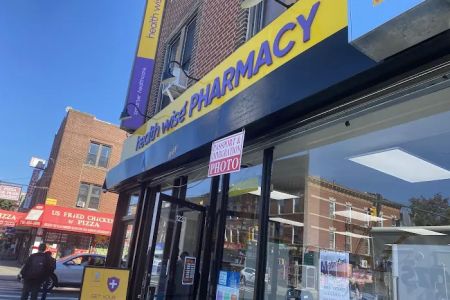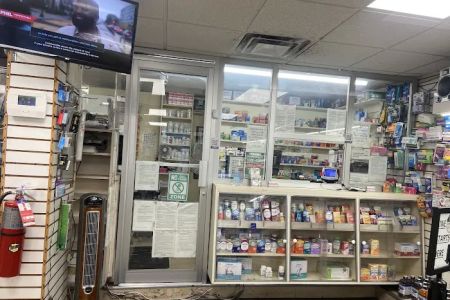Why Educating Patients About Over-the-Counter Products Is Essential
As a pharmacist, I’ve encountered countless patients who either don’t understand the importance of over-the-counter (OTC) products or don’t know how to use them correctly. It became clear to me early on that educating patients about OTC products was a crucial aspect of my role. These products are widely available, and while they can be effective for a range of conditions, they can also cause harm if used improperly. Proper education on OTC products not only helps patients avoid common mistakes but also empowers them to make informed decisions about their health.
Over-the-counter medications are often the first line of defense for common health issues like headaches, allergies, colds, or digestive discomfort. However, many patients don’t realize that even though these products don’t require a prescription, they still come with risks. I’ve found that educating patients about OTC medications is essential to ensuring they use them safely and effectively. This process involves more than just providing instructions; it’s about helping patients understand how these medications work, how to choose the right ones, and when it’s necessary to seek professional advice.
1. Understand the Common OTC Products and Their Risks
The first step in educating patients about OTC products is understanding the common types of products available in pharmacies. As a pharmacist, I’ve found that many patients don’t realize just how broad the category of OTC medications is. From pain relievers to antacids, cough syrup to antihistamines, the list of available products is extensive. Each of these products has its own uses, side effects, and potential risks that patients need to understand before purchasing or using them.
For example, I often see patients reach for ibuprofen or acetaminophen without considering the possible side effects, such as liver damage from overuse of acetaminophen or stomach ulcers from excessive ibuprofen use. By discussing the active ingredients in common OTC drugs and their potential side effects, I’ve been able to help patients choose the right products for their needs. Educating them about the possible risks, including drug interactions or adverse effects, is key to promoting safety when using OTC products.
Additionally, helping patients understand the importance of reading labels and following dosing instructions is crucial. OTC medications might seem like harmless, everyday products, but improper use—such as exceeding the recommended dose—can lead to serious health complications. I always emphasize the importance of adhering to the instructions on the label and ensuring they are aware of any precautions associated with the medication.
2. Help Patients Identify Their Needs and Choose the Right OTC Products
One of the challenges I’ve faced in educating patients is ensuring they choose the right OTC products for their specific needs. Many patients come into the pharmacy with a general idea of what they need, but they may not know which specific product will best address their symptoms. In some cases, they may pick something based on brand recognition or price rather than efficacy or suitability for their condition.
For instance, I’ve had patients ask for cold medicine without specifying the type of cold symptoms they’re experiencing. Some cold medications are designed to relieve congestion, while others address coughing or sore throats. I always take the time to ask clarifying questions about their symptoms and educate them on the different options available. This helps patients make a more informed choice, ensuring they pick a product that best suits their needs.
One approach that has worked well is explaining the different active ingredients in OTC products and how they work to address specific symptoms. For example, I might explain the role of antihistamines for allergies or decongestants for nasal congestion. This empowers patients to make better choices and reduces the likelihood of them using products that won’t be effective for their condition.
3. Educate Patients on Potential Drug Interactions and Side Effects
While OTC products are generally considered safe, the risk of drug interactions is a major concern. Many patients don’t realize that OTC products can interact with prescription medications, other OTC products, or even certain foods. I’ve had patients who unknowingly took a medication that interacted negatively with their prescription drugs, leading to undesirable side effects or diminished effectiveness of their treatment.
For example, certain antihistamines can interact with other sedative medications, increasing the risk of drowsiness or accidents. It’s crucial that patients are aware of these interactions before using multiple products simultaneously. I always recommend asking about potential interactions when they come in for advice and emphasize the importance of reading through the list of potential drug interactions on product labels or consulting with a healthcare provider or pharmacist if they are uncertain.
In some cases, I’ve advised patients to avoid certain OTC products altogether because of pre-existing medical conditions or other medications they are taking. Patients with high blood pressure, for instance, should avoid decongestants that can raise their blood pressure. Education about these risks can prevent adverse reactions and ensure that OTC products are used safely.
4. Discuss the Importance of Self-Care and Monitoring Symptoms
In my experience, educating patients about the role of self-care in managing their health is an important part of the conversation about OTC products. Many people turn to OTC medications for relief, but it’s essential to monitor symptoms and know when to seek professional medical advice. I’ve had patients who relied on OTC painkillers for weeks without seeing improvement, which can be a sign of an underlying condition that requires professional attention.
I always encourage patients to use OTC products as part of a broader self-care routine that includes rest, hydration, and proper nutrition. When I educate patients, I often remind them that while OTC medications can provide temporary relief, they are not a cure-all. If symptoms persist or worsen, it’s important to consult a healthcare professional to rule out more serious health issues.
As a pharmacist, I’ve found that educating patients to be proactive about their health and mindful of their symptoms leads to better outcomes and less reliance on medication in the long run. Ensuring that they understand when to seek medical help can save them from unnecessary complications.
5. Use Visual Aids and Written Materials for Better Understanding
Some patients find it difficult to retain all the information provided during an educational discussion, so I’ve learned that using visual aids and written materials can be incredibly helpful. For example, I often provide brochures or pamphlets that explain the proper use of OTC medications, common side effects, and when to seek medical help. These materials can be a useful reference for patients to take home and review at their convenience.
Additionally, I make sure to use simple, easy-to-understand language when explaining complex concepts. Many patients may not have a medical background, so using jargon-free explanations helps them absorb the information. In some cases, I also direct them to reliable online resources that offer further guidance on OTC products, ensuring they have access to reputable information.
Using these tools ensures that patients leave with a clear understanding of the medications they are using and feel more confident in their ability to make informed decisions about their health.
6. Addressing Concerns and Building Trust
One of the most important aspects of educating patients is building trust. Patients are more likely to listen to advice and follow recommendations when they feel comfortable and supported. Over the years, I’ve learned that taking the time to listen to patients’ concerns, answering their questions, and addressing any fears or uncertainties they have about OTC products creates a more positive interaction and leads to better patient outcomes.
For instance, some patients may be concerned about the cost of OTC products or the possibility of side effects. By acknowledging these concerns and offering alternative options or solutions, I can help alleviate their worries. I’ve found that this approach not only fosters a stronger relationship with patients but also ensures that they feel empowered to take charge of their health.














